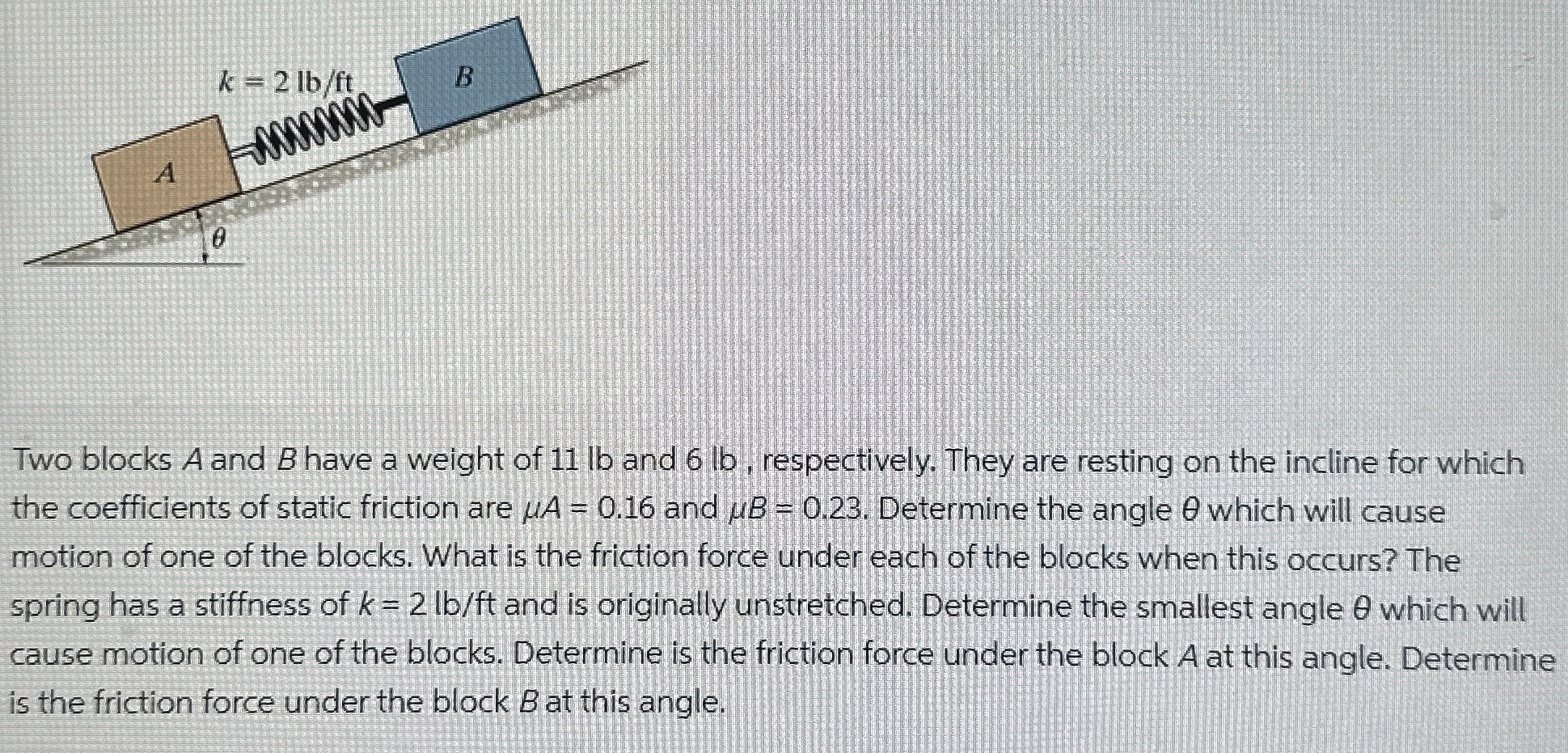Two blocks A and B have a weight of 11 lb and 6 lb, respectively. They are resting on the incline for which the coefficients of static friction are μA = 0.16 and μB = 0.23. Determine the angle θ which will cause motion of one of the blocks. What is the friction force under each of the blocks when this occurs? The spring has a stiffness of k = 2 lb/ft and is originally unstretched. Determine the smallest angle θ which will cause motion of one of the blocks. Determine is the friction force under the block A at this angle. Determine is the friction force under the block B at this angle.
